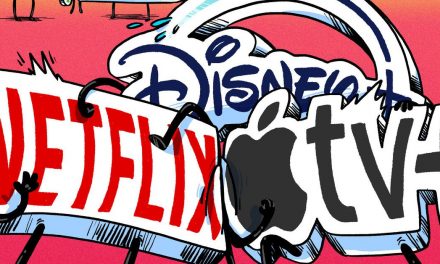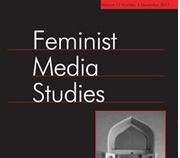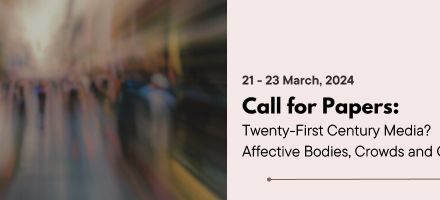In his book Animals on Television (2017), Brett Mills states that “representations of animals often function to highlight cultural understandings about what it is to be human.” Nonhuman animals have been unwilling objects of the human gaze: humans have been exploiting animals (real and imagined) on the basis, and the attendant continued perpetuation, of self-assigned human superiority and centrality. This anthropocentrism is also why humans primarily define animals, their agency, their intelligence, their emotional lifeworlds, etc. by projecting onto them human ideas and discourses. Innumerable popular culture artifacts and performances revolve around nonhuman animals, from reality TV shows on Animal Planet and iconic characters such as Lassie to animals as parts of wrestler gimmicks and animals in sports team names. These and other popular culture artifacts touch on animal-related matters of all kinds, from narratives in which heroic pets seem to take center stage to meat preparation and consumption. All of these figurations of animals allow us to explore how we treat and discursively construct animals.
This international conference will focus on the representation of animals and human-animal relations in American popular culture, in all its forms, across media, past and present. While we list a few thematic clusters below, proposals that do not fall into these will, of course, also be considered.
The program is organized and hosted by the PopMeC Association for US Popular Culture Studies and the Austrian Association for Cultural Studies, Cultural History, and Popular Culture.
Thematic Clusters
Representations of animals in popular culture
Nonhuman animals have been a fixture in film, TV series, comics and graphic novels, music videos, reality TV shows, documentary films and series. These representations tend to establish and perpetuate (or appropriate) shared beliefs about, and stereotypes of, specific species. Anthropomorphic animals roam Disney movies (and other popular culture artifacts), while zoomorphism renders human characters and actors animal-like (see also below). Crucially, animal representations in popular culture do (purportedly) not only target human audiences. For example, the official DOGTV website hails its programming as “the only technology created for dogs with sights and sounds scientifically designed to enrich their environment.” Dogs can watch other dogs sleeping or running around. And the broadcaster’s YouTube channel is filled with content that highlights that “dogs love to watch DOGTV.”
From animality to bestiality: the human as nonhuman animal
Animality and bestiality have been used as symbolic tools to exclude selected subjects from the select group of “human” on the basis of race, ethnicity, gender, sexuality, religion, etc. Asymmetric power structures and purposeful discrimination have been connected to specific discourses and representations, often relying on zoological metaphors and constructions, as well as the creation of human-animal hybrid monsters transgressing established social mores. At the same time, though, animal symbolism often endows humans (and human characters) with superhuman strength, agility, etc., which is why animal representations (next to Indigenous peoples) are frequently used as sports team names and sports mascots.
Commodification of non-human animals: zooculture, pet industry, agribusiness
Animals are integrated into a world ecology that, according to Jason Moore, relies on the “cheapening of nature,” which allows humans to shamelessly exploit nonhuman animals. While discussions of, for example, zoo animals and animals in theme parks are long-established by now, the exploitation of animals has taken different dimensions in recent years that warrant closer examination, such as the exploitation of pets and their keepers’ feelings by the pet industry. Likewise, documentaries such as The Conservation Game have shown how not only the trade in “exotic” animals is booming in the US but how media figures that purportedly publicly represent animal welfare, in fact, profit off animal exploitation.
Animal science: research, experimentation, and animal-assisted therapy
Nonhuman animals have been objects of scientific interest for a variety of reasons and aims, often raising ethical concerns and controversies. Besides their zoological study, animals have been used as research commodities and test subjects in processes that range from drug and beauty product testing to the creation of human-animal hybrids (e.g. xenotransplantation). Animals have also been increasingly used in therapeutic contexts, giving rise to debates on the effectiveness of the practice.
Animals in popular discourse
We might be witnessing the first stages of the sixth mass extinction. And while plants, fungi, and other lifeforms also vanish at an alarming rate, popular discourse focuses on the disappearance of animals from Earth. This is just one example of how animals figure in a variety of popular discourses and practices including, but not limited to, wildlife protection vs. agricultural interests, wildlife vs. recreation (e.g. black bears killing hikers and mountain lions snatching mountain bikers off their bikes), domestic cats as invasive species, the Asian “murder hornet” invasion, de-extinction science, animals and climate change, re-wilding, and public science (e.g. photographing sharks to identify them).
Deadline for submission: April 24, 2022
We accept abstract proposals for individual presentations (≈ 300 words) or full panels (3-4 presenters, ≈ 250-word description of panel plus abstracts of all papers—these abstracts may be shorter than abstracts for individual presentations). Please, email your proposal to popmec.animals@gmail.com as a single attachment (.doc, .docx, .odt) including name, affiliation (if any), and contact email.
In response to popular demand, we also welcome proposals for video essays. We will feature them on the website and participants will be able to comment on the videos. You can submit a proposal as indicated above (for either one individual submission or a cluster of videos), specifying that it is a video essay; if you’d like to discuss your video essay live, please just mention it in your email so that we can organize the related session in the best way possible. Please note that video essays are not pre-recorded presentations.
Official website popular-animals.com
If you have any doubt or inquiry, feel welcome to drop a line at popmec.animals@gmail.com





